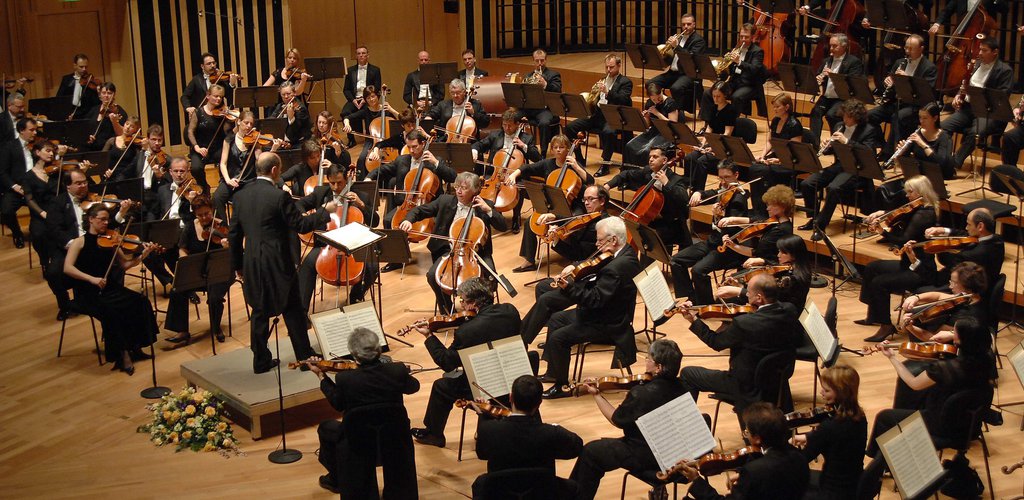The title reveals the concept of the new festival, and there is no need to argue about its conduciveness either: it is right and welcoming to respect each other’s art when the nations of the continent depend so heavily on each other. I warmly welcomed the first country chosen by the organisers, the Czech Republic, since for us, the most important nations are those that are geographically close to us; the Czechs lead the way in so many things and we can learn a lot from them. In addition to Dvořák music concerts, early music as well as the very selective jazz and pop music, the festival comprised an evening of contemporary music – which is discussed below.
What can be shown in one evening from a nation’s modern music? Five pieces – which, if a prudent and unbiased professional recommends them for selection, can flash authentic working tendencies as well as draw attention to a couple of renowned composers and musical attempts considered to be enduring. This was the concert I attended in the Festival Theatre in the Palace of Arts: all of the pieces were of good quality, and allowed us to make general observations. Let us begin with the latter. Michal Nejtek (1977), Martin Smolka (1959), Slavomir Hořinka (1980) Ondřej Adámek (1979) and Petr Wajsar (1978) are not only connected by virtue of the fact they are mainly in their thirties, as shown by the dates, but also by the peculiarity of their music that bears no pure marks of any previous dominant trend: neither the “twelve-tone technique”, which is a legacy of the 1960s, nor the neo-romantic or retro wave of recent decades, nor even minimal music. These compositions blend all of the aforementioned options and many others together based on the “anything goes” principle, and accordingly, as can be read on labelled food products, they “may contain traces of” this and that. Postmodern eclecticism? Something like that.
One important thing they have in common is that each composer deems a solid structure important: the pieces have accentuated forms and structures, and there was one composition only, a piece by Ondřej Adámek, that I found overwritten. In other cases, however, and this is very important, the listener can easily find their way in the music, they know when and where the form process is, and the compositions end at just the right time. It is also important that nearly all the compositions endeavour to rehabilitate the steady pulsating rhythm. Well, it is easily one generation after the repetitive school. Let's get specific: Michal Nejtek’s piece (...your heart stops, you continue writing) clearly conveys the impression of jazz with the stubborn repetition of its short, vividly rhythmical homophonic sequences (talking about jazz I almost wrote ‘riffs’), then the English lyrical recitation takes the listener by surprise – three of the instrumentalists recite an excerpt from one of Raymond Carver’s poems (Your Dog Dies) in canon. Smolka drew inspiration from the strange chords of an out-of-tune piano in a country house: the listener is engrossed with the effects of echoes during the first minutes of Rush Hour in Celestial Streets, which is followed by a passage with accentuated rhythms and many repetitions, and in the end a unique hocket from the 21st century is imprinted in the memory of the recipient. It is interesting that Smolka is the oldest and Hořinka is the youngest composer in the programme, yet it is the latter who wrote the most traditional type of music. For me at least, Shirei ahava with its Hebrew title seemed to be the most conventional composition of the evening with its separate and strongly tonal instrumental solos (or even with the traditionalism of the “solo” and “continuo” structure) and the neo-romantic reminiscences. With its manipulated speech sounds, the method of Adámek (Ça tourne ça bloque) represented the use of live electronics; however, accentuated rhythms and repetitions as musical forms as well as a dense texture, in which instruments and speech sounds reflect on each other continuously, could also be noticed. 8 Sentences on Fans, an opus by Wajsar that adapted Claudel’s haikus and combined French lyrical recitation (Laurent Winkler) with a chamber orchestra, was the only composition in the evening in which stylistic links seemed at times almost like mimicry: the finale resembled a homage to Steve Reich with its soothing and monotonous repetitions as well as tracks and patches of sounds.
Slovak conductor Peter Vrábel (1969), who lives in the Czech Republic and is the founder and director of the UMZE Chamber Ensemble and the Berg Orchestra there, conducted the Budapest Festival Orchestra's world-class contemporary music ensemble with great expertise – all of the pieces were performed scrupulously and suggestively. With the help of an interpreter, Vrábel briefly introduced each composition to the audience with pleasantly factual sentences – facilitating the welcome of the concerts. An audience of 80-90 people filled the Festival Theatre, which is quite a large number for contemporary music programmes. Nevertheless, I saw only two Hungarian composers and one Hungarian instrumentalist – despite the fact that I kept peering around. No comment.


